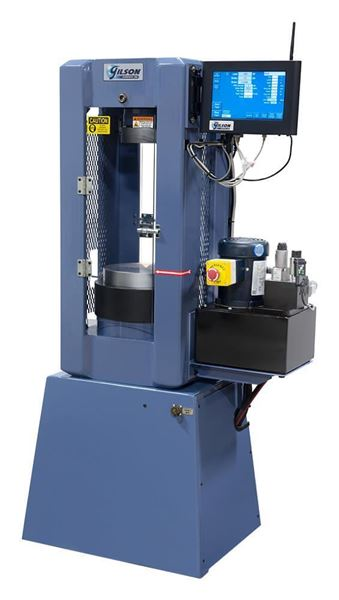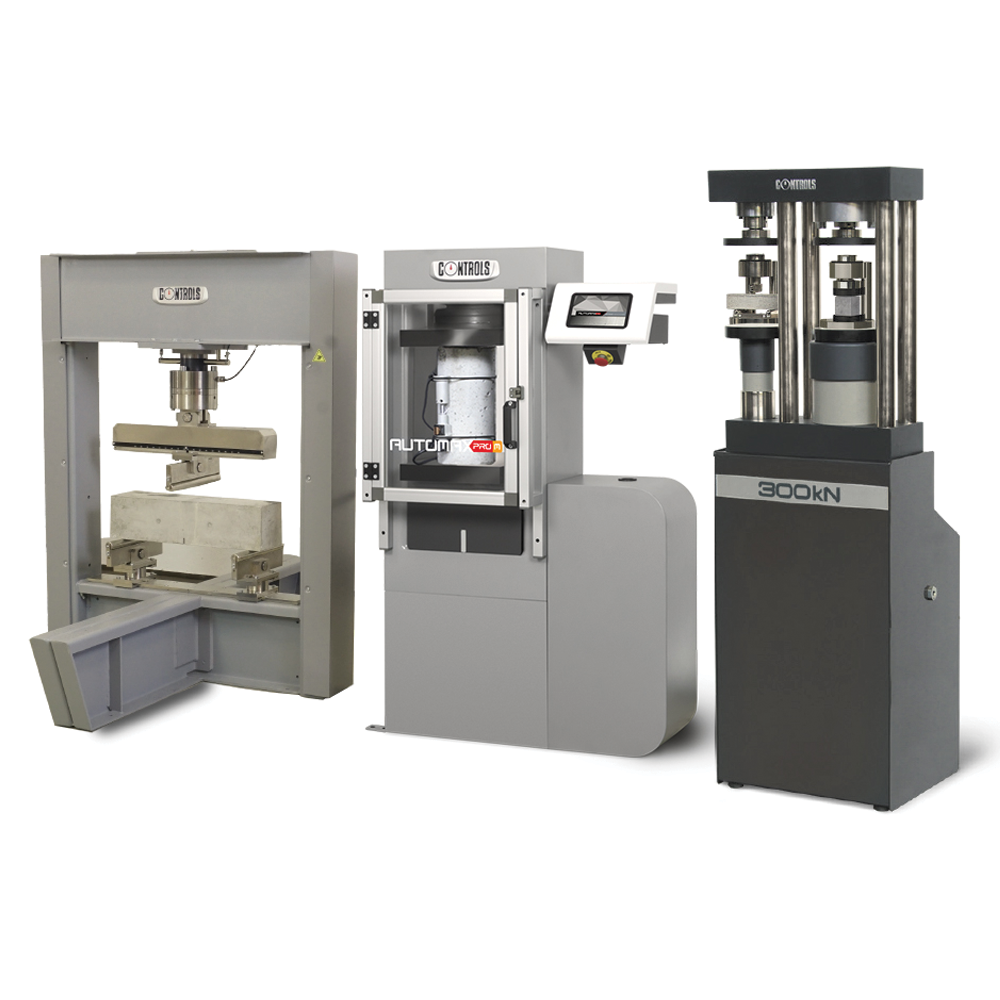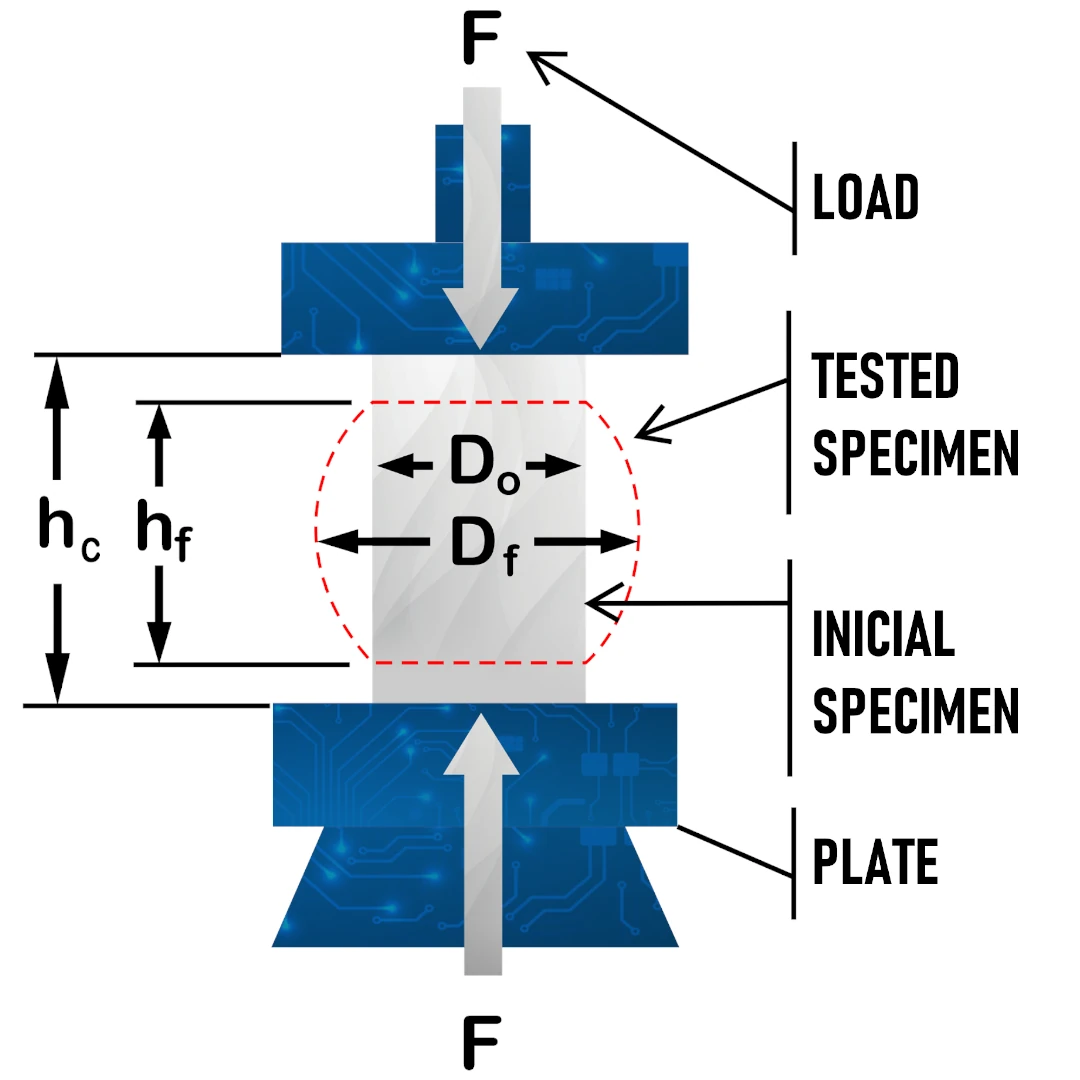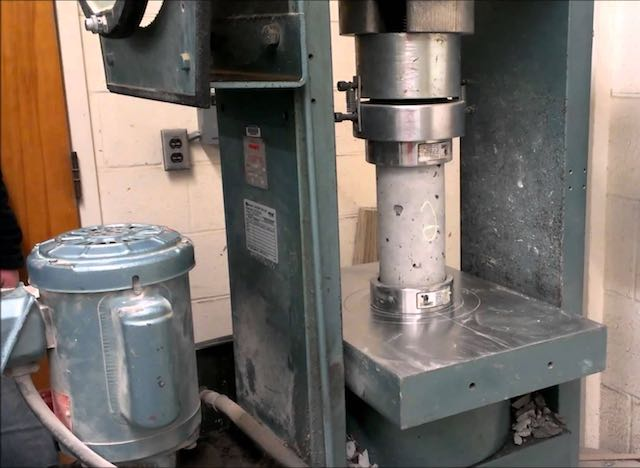Need to verify concrete strength accurately? Whether for compliance or safety, the accuracy of a concrete break machine is indispensable for construction and testing laboratories. This article will detail the operation, types, and selection criteria of concrete break machines, equipping you with the know-how to choose the model that best fits your project’s testing demands.
Key Takeaways
- Concrete break machines, critical for assessing the compressive strength of concrete, can test various types of specimens and require precise operation to ensure accurate and consistent results.
- Advances in concrete break machine technology include automated controllers, data management systems, and additional accessories which enhance test precision and versatility for different concrete specimen shapes.
- Proper use, regular calibration, and maintenance of concrete break machines are essential for their longevity and precision, as well as to uphold safety during testing, especially when dealing with explosive failures in high-strength concrete samples.
Understanding Concrete Break Machines

As the backbone of our cities, concrete needs to be strong and reliable. Concrete break machines, also known as concrete compression machines, serve as the gatekeepers for this purpose. Engineers routinely use these machines to determine the compressive strength of concrete—a crucial performance measure for designing buildings and other infrastructure. These machines predict the load-bearing capacity of concrete materials, establishing their maximum load per unit area that they can withstand, which is paramount for construction projects.
Moreover, these machines can be configured to test different types of concrete samples, enhancing their versatility in concrete testing labs.
How Concrete Break Machines Work
The concrete break machine initiates the testing process by applying controlled loading to a cylinder or beam specimen until fracture. To maintain safety during testing and ensure uniform force distribution, these concrete cylinders must exhibit even, flat, and parallel bearing surfaces. The load application to concrete cylinders requires meticulous care since any mishandling can lead to injury or equipment damage.
The capacity of the concrete break machine, which determines the maximum concrete strength it can test, is restricted by the size of the specimens under test. Specimen size and shape significantly affect concrete compressive strength, with size effects being particularly noticeable in high-strength concrete and larger specimens.
To measure flexural beam strengths accurately, the machine must maintain precision even at lower peak load- levels for low strength concrete beams. However, challenges like friction between the ends of the specimen and the loading platens can result in artificially higher compressive strength readings, leading to inaccurate test results.
Key Components of Concrete Break Machines
More than what meets the eye, a concrete break machine is a complex system where various key components work in harmony. One such component is the two-stage hydraulic system, which includes reliable hydraulic valve controls that manage the loading process and prevent over-extension of the hydraulic ram. The load frame, typically constructed from high-strength metals like steel, must have sufficient frame openings or daylight openings to handle varying specimen sizes.
The components of a testing machine include:
- The actuator, which can be hydraulic or servo-electric, applies force to the specimen.
- A load cell measures the force applied by the actuator and translates it into an electrical signal.
- The machine’s crosshead and grip assemblies secure the load cell and the specimen, ensuring consistent application of load.
- The control panel serves as the interface for the operator to configure and oversee testing parameters like test speed and load limits.
Types of Concrete Break Machines

To cater to a wide array of needs, concrete break machines are available in various forms. High-capacity machines with appropriate safety features are essential for reducing the risk of accidents during compression testing. Depending on the specimen types like:
- cylinders
- cubes
- cores
- prisms
- beams
Additional accessories might be required to adapt the compression machine.
We’ll explore the two main types: manual and hydraulic compression testing machines.
Manual Compression Testing Machines
Manual concrete compression testing machines are commonly used for standard concrete testing applications, including compressive strength testing. They offer the benefit of simple operation, usually involving manual adjustment to apply compressive force to a concrete sample. However, simplicity comes with its challenges.
One operational challenge of manual machines is the requirement for the operator to manually adjust a valve to maintain specified rates of compression. This can be particularly difficult for standards demanding constant low-speed testing. As such, while manual machines are often sufficient, they may not always be the best choice for certain testing scenarios.
Hydraulic Compression Testing Machines
In contrast to their manual counterparts, hydraulic compression testing machines are equipped with a continuous duty hydraulic pump. This allows for consistent application of load, eliminating the need for manual pressure adjustments during the test with a compression testing machine.
Hydraulic systems in these machines are often more advanced, featuring two-stage hydraulic systems and hydraulic valve controls. These are essential for precise load regulation and avoiding over-extension of the hydraulic ram. This makes hydraulic compression testing machines a reliable option for tests demanding high precision and consistent load application.
Advanced Features of Modern Concrete Break Machines

Significant advancements have been made in the design of modern concrete break machines compared to their predecessors. They are equipped with:
- Advanced servo-control equipment
- Automatic controllers
- Closed-loop feedback control systems
- Advanced data management capabilities, storing up to 1000 tests and managing 3000 data points per test
These features are essential for large-scale testing and longitudinal studies.
Automatic data logging ensures detailed information is captured during each test, while their versatility allows them to perform tension, compression, and flexion tests due to their automated control and strain-rate feedback. Let’s further explore these cutting-edge features.
Automatic Controllers and Pro Controllers
Automatic controllers in concrete compression machines have the following features:
- Touchscreen interfaces for easy operation
- Ability to control two separate compression frames simultaneously
- Additional channel inputs for advanced testing like extensometer and compressometer testing
- Ability to perform rapid approach and apply initial loads automatically
- Data acquisition systems that record readings per second and enable data export via USB
- Real-time graphing that visualizes the stress-strain curve for immediate material behavior insight.
Pro controllers offer several advantages:
- They are designed with programmability for custom test cycles
- They have modular software architecture for easy updating and addition of new testing standards
- They automate complete test cycles through concrete compression machines with minimal operator input
- They increase efficiency and significantly reduce the possibility of human error.
Achieving Accurate and Repeatable Test Results
Modern concrete compression machines are intentionally designed to:
- Return accurate and repeatable test results, crucial for assessing the compressive strength of concrete and ensuring the safety and reliability of concrete structures.
- Fortify the reliability of these machines through precise operation and calibration capabilities.
- Provide exact force and deformation measurements through advancements such as high-precision load cells and displacement transducers.
Adaptability in testing various concrete specimen types is achieved through the use of specific accessories, such as compressometers and extensometers that measure deformation, strain, and Poisson’s ratio, as well as adaptive accessories for different concrete shapes. Moreover, the application of load during testing is meticulously regulated by the concrete compression machine’s hydraulic mechanism, providing precise control that ensures consistent test conditions for reliable results.
Selecting the Right Concrete Break Machine for Your Needs

The selection of an appropriate concrete break machine not only depends on understanding their operation but also aligning the testing range and their capabilities with your testing needs. The total capacity of the machine should be at least 20% greater than the expected ultimate load of the specimens to be tested, which can be considered as the indicated load. Also, consider the weight of the machine and its installation requirements which can significantly impact the testing space and portability.
Let’s further explore the process of assessing your testing requirements and considering additional features while selecting a machine.
Assessing Testing Requirements
When assessing your testing requirements, one of the first considerations should be the average load rate and the load frame capacities of the concrete break machines, taking into account the live load during the tests. These capacities typically range from 250,000 to 650,000 lbf (1,112 to 2,891 kN). The selection of a machine with the appropriate total capacity should be based on the types of tests it will conduct, including the final load for:
- Compression tests
- Flexural tests
- Splitting tests
- Modulus of elasticity tests
- Poisson’s ratio tests
For example, a machine with a total capacity of 1112KN can test 6x12in cylinders with expected strengths up to about 48.26Mpa, indicating the correlation between specimen size and maximum testable strength. Also, it is essential to choose a machine with daylight openings large enough to accommodate the biggest specimen size to ensure ease of handling during tests.
Considering Additional Features and Options
In addition to assessing your testing requirements, you might also want to consider additional features that can enhance your testing experience and results. Some of these features include:
- High-resolution color touchscreen displays for accurate precision machine operation, setup, and calibration
- Motor-control knobs for precise calibration load adjustments
- Support for calibration with 1 to 10 points in any chosen increment
These features can help improve the accuracy and efficiency of your testing process.
Adaptive accessories can enhance machine functionality and versatility, allowing testing of various sample types and shapes. However, bear in mind the weight and installation requirements of model-specific accessories. For instance, heavy accessories might necessitate carrier bracket options.
Proper Use and Maintenance of Concrete Break Machines

To ensure the longevity and precision of concrete compression break machines, their proper use and maintenance are of utmost importance. They should be equipped with safety features like fragment guard doors to handle explosive failures. Machines must also have the capability to test a range of expected strengths to accommodate different testing scenarios.
We’ll now examine how calibration, maintenance, and safety precautions contribute to the effectiveness of these machines.
Calibration and Maintenance
Regular calibration of concrete break machines is essential to the accuracy of compressive strength measurements, maintaining standardized testing procedures. It aids in detecting deviations caused by wear and tear, thus preserving the reliability of test results. Accurate machine calibration directly influences the consistency of test outcomes, which is important for evaluating concrete’s quality and structural integrity.
Comprehensive pump inspections, covering components from boom to hopper, should be conducted to ensure adequate lubrication and fluid levels, preventing equipment failure. Interestingly, manual compression machines can be upgraded with automatic controllers to increase automation without incurring the costs of complete equipment replacement.
Meeting industry standards such as ASTM C39 and those outlined in ACI 363 ensures that concrete break machines are appropriately calibrated and maintained.
Safety Precautions during Testing
Safety is paramount when it comes to operating concrete break machines. These machines should be equipped with protective fragment guard doors to manage explosive failures during the testing of high-strength concrete samples. The stiffness of a concrete break machine is crucial for ensuring uniform load application on the concrete strength specimens used, which helps mitigate the risk of explosive failures that can compromise machine functionality and safety.
Over the years, explosive failures during high-strength concrete sample testing have led to the advancement of safety protocols. The development of fragment guards and other safety features for concrete break machines is a testament to the continuous evolution in the pursuit of safer testing environments.
Case Studies: Concrete Break Machines in Action
Concrete break machines, beyond being mere lab equipment, serve as integral tools that shape and reshape our world. They play a pivotal role in large-scale infrastructure projects where ensuring the strength and quality of concrete is crucial. From the Crossrail project in London to the new San Francisco-Oakland Bay Bridge project, concrete break machines have been at the heart of these engineering marvels, verifying concrete strength for essential structures such as:
- bridges
- tunnels
- dams
- highways
- buildings
Let’s examine these applications in more detail.
Large-Scale Construction Projects
In the arena of large-scale construction projects, the use of concrete break machines is indispensable. The construction of the world’s tallest building, the Burj Khalifa, necessitated stringent testing, which was partly accomplished through the use of concrete break machines. The high-performance concrete used in the building was subjected to a rigorous testing process to ensure it met the necessary strength requirements.
By implementing these thorough checks, the concrete break machines played a pivotal role in upholding the Burj Khalifa’s structural safety. This is just one example of how these machines contribute to the safety and reliability of large-scale construction projects, ensuring the concrete used can:
- withstand the stress of these massive structures
- meet the required strength and durability standards
- prevent any potential structural failures
- provide a solid foundation for the entire building
Research and Development Applications
Beyond the construction site, concrete compression break machines play a vital role in research and development, aiding in the design of structures through non-destructive evaluation and acceptance testing. For instance, research at the University of Illinois at Urbana-Champaign utilized concrete compression testing machines to develop ultra-high-performance concrete with improved mechanical properties and durability.
These machines have also been instrumental in research involving mineral additions and admixtures that result in concretes with enhanced durability and mechanical properties. They’ve played a key role in the development of eco-friendly concrete mixtures that emphasize sustainability in the construction industry.
Additionally, researchers have tested fiber technology developments for concrete reinforcement using concrete break machines, leading to the introduction of diverse fibers that enhance concrete’s performance in:
- industrial flooring
- road construction
- bridge construction
- precast concrete products
and other applications.
Summary
From towering skyscrapers to intricate tunnels, concrete compression break machines are the unsung heroes behind our architectural marvels. These machines are not just about applying force; they are about precision, reliability, and innovation. They test the very fabric of our cities, ensuring the concrete we rely on is up to the task. They’ve evolved over time, incorporating advanced features that enhance their functionality and efficiency. Whether you’re looking to select a machine for testing needs or aiming to understand their workings better, remember that these machines are more than just equipment—they’re the guardians of our built environment. So, next time you’re admiring a towering structure or driving through a tunnel, spare a thought for the concrete break machines that helped make it possible.
Certified MTP has the largest selection of concrete testing supplies, showcasing industry-leading brands for Concrete Compression Testing Machines, Concrete Air Entrainment Meters, slump testers, Concrete Test Cylinder Molds, and fresh concrete testing equipment.
Frequently Asked Questions
What is a concrete compression machine?
Users employ a Concrete Compression Machine to apply compressive force to various types of concrete specimens, determining if the material meets design and structural strength requirements. This renders it an essential tool in any concrete testing lab.
How does a CTM machine work?
A CTM machine works by applying a compressive load to a material sample until it fails, using a piston that moves up and down inside a cylinder.
How do you carry out a compressive strength test on concrete?
To carry out a compressive strength test on concrete, you need to bring a cured concrete specimen to the lab and apply force until failure, determining the ultimate strength of the sample from the results.
What is the role of concrete break machines?
Concrete break machines, also known as concrete compression machines, apply a controlled load to concrete specimens to test their strength, thus determining their compressive strength, a crucial parameter in building and infrastructure design.
What advanced features do modern concrete break machines have?
Modern concrete break machines have advanced features such as servo-control equipment, automatic controllers, closed-loop feedback control systems, and advanced data management capabilities, allowing for more precise and efficient operation.
For more concrete testing needs, consider the popular Mini-Jaw Crusher
Related Blogs for Concrete Break Machine
Testing Concrete Cylinders | The Pros and Cons
Concrete Compression Tester | Shop Certified MTP
Compressive Testing: Tests, Procedures, and Results
The Concrete Break Test: Compressive Strength Analysis
Cube Testing: Compressive Strength of Concrete Explained
Concrete Strength Test: At Home and On-site
Strength Testing of Concrete Cores: Sampling and Procedures
Concrete Cylinder Compression Test: Evaluating Strength
Cost of a Compression Test Machine: Concrete Tests
Concrete Strength Testing and Steel Reinforcements
How to Use a Concrete PSI Chart
Concrete Compression Test: Equipment Needed
Concrete Strength Test: Fixing Failures
28 Days to Testing Concrete for Strength
Compression Strength of Concrete With The Perfect Products
Concrete Water Permeability for Durability and Performance
Decoding the Surface: Is Concrete Porous or Nonporous?
Top Concrete Strength Testing Methods: Structural Integrity
Concrete Cube Testing: An In-Depth Guide
Concrete Cube Testing: An In-Depth Look
How to Calculate Unit Weight Concrete in 2023
Determining Unit Weight of Concrete for Accurate Measurement
Concrete Strength: Unraveling the Mystery of PSI
How is Concrete Tested for Strength and Durability?
Test for Strength of Concrete: Measure and Assess Strength
The Concrete Break Test: Compressive Strength Analysis
ASTM C39: Mastering Compressive Strength Tests on Concrete
Measuring Concrete Strength With A Concrete Testing Product

